 Yellow-legged
Gull - Larus michahellis
Yellow-legged
Gull - Larus michahellis
(last update: October 08 2013)
Coordinators:
Delfín González
Gabriel Martín
Antonio Gutierrez
Amir Ben Dov
Mars Muusse
Larus michahellis - adult February
This website deals with the Yellow-legged Gull taxon michahellis, which is a common migrant from July to December in NW Europe. After extensive expansion of the breeding population during the last three decades, it nowadays can be found breeding in Belgium, the Netherlands and Britain in mixed couples with both Herring Gull (argenteus) and Lesser Black-backed Gull (graellsii). There are subtle differences between the populations from the Mediterranean, Atlantic coast of Portugal and Morocco and from the islands in the Atlantic. Most pronounced differences can be found in the taxon atlantis, now regarded as full species by some authors and birds along the Atlantic coast of the Iberian peninsular: lusitanius. Both atlantis and lusitanius are treated in their own sections on this website.
General description
At the start of the calendar year, only very limited numbers of adult Yellow-legged Gulls spend the winter months as north as NW France. At the dumping site of Dannes, near Le Portel, large mixed flocks of mainly Herring Gulls (1,000's) from NW and N Europe can be found including adult Yellow-legged Gulls (few tens in January 2002). Other spots in NW France which hold numbers of adult Yellow-legged Gulls in other seasons, e.g. Etaples, Le Portel and Boulogne-sur-Mer only hold single birds in mid-winter. Scattered records in the Netherlands involve single birds along the coast at Westkapelle, Maasvlakte and IJmuiden. Inland records can be expected from dumping sites and along the rivers, mainly in the southeast along the Meuse. Numbers hardly exceed ten a day in this period of the year, although YLG aggregate on some spots with few tens. Numbers remain low in February, March, April and May, but increase after breeding. By June, over 700 Yellow-legged Gulls can be found at Dannes (year 2003).
Features of adult michahellis
As can be expected, there is no
surprising moult going on in adult birds, from January to April. The
average adult michahellis finishes primary moult by the end of
October. By January, the outer primaries may show slight wear already,
maybe caused by their common habit to feed on dumping sites in NW Europe. The upper
tertials and inner coverts may show wear as well, as they were moulted
early September last year and are over four months of age already. The
winter head streaking, which was obvious and concentrated on the
ear-coverts, around the eye and up to the crown by September and October,
has been worn away by mid winter, leaving the snow white appearance of
adult michahellis as mentioned in many bird guides. Mid winter
adult michahellis is the Classic, "well-known" plumage
of Yellow-legged Gull and in most birds, this plumage shows easy clues for
identification:
- Snow-white head with sometimes remaining head streaking around the eye;
- Red orbital ring and clear yellow iris;
- Yellow bill, sometimes orangey-yellow, with the red gonydeal spot which
slightly extends on the upper mandible and a clear, obvious gonydeal
angle;
- In profile the head and neck are strong and powerful, michahellis is rather high breasted with long wing and long legs;
- Upper-parts grey tone normally ranks between 6 and 7 Kodak Grey, neutral
grey. Michahellis lacks the blue tinge as can be found in argentatus;
- Michahellis shows relatively much black in the wingtip, normally
with a complete black sub-terminal band on p5 of even broadness. Sometimes
there is even an isolated black angular spot on the outer-web of p4,
although this is normally absent in adults. The black patch on p10 is
relatively broad at it's most narrow point, at the feather's edge of the
inner-web. Here, at the feather's edge, the black patch is still as broad
as or only slightly less broad than the white mirror on p10. In other
words, the grey area of the inner-web is limited to the basal half of the
visible primary in most birds. Nevertheless, the grey patch of the
inner-web may run further down and, when combined with a broken
sub-terminal band on p10, may resemble nominate Larus argentatus.
Normally p10 has a complete sub-terminal band, but it may be broken at the
centre, creating two isolated spots at the feather's edges. A broken
sub-terminal band on p10 may occur more often in eastern populations than
in West Mediterranean populations (according to e.g. Jonsson, Alula 3/98).
Normally, p9 has a mirror as well, on the inner-web, not reaching the
feather's edge on the outer-web;
- And of course, as the name suggests: deep yellow legs.
Michahellis at Le Portel, NW France
Le Portel doesn't hold a large colony of Yellow-legged Gulls in the near surrounding. Colour-ring and metal ring recoveries of birds in NW France and at Westkapelle (most in the period July - September) reveal that birds originate from southern France (the Mediterranean coast near Marseille), eastwards to northern Italy and from Croatia to Switzerland. Whether other populations are involved in NW France as well, still has to be found out. Future colour-ring projects may answer this question. At Le Portel, especially the male Yellow-legged Gulls from southern France can be identified readily easily as they are huge, powerful birds, in profile not unlike nominate Larus argentatus from Scandinavia. However, scanning through a flock of Yellow-legged Gulls, some birds may be appear small-billed, round-headed with a 'friendly' facial expression and consequently they may be much more difficult to identify. Yellow-legged Gull populations with the smallest measurements can be found on the Atlantic Islands. See also the website of Nick Rossiter.
By March, many adult Yellow-legged Gulls return to the breeding grounds. The breeding season starts early for this species which breeds in southern Europe compared to argenteus, graellsii and of course compared to intermedius and argentatus, Fledged juveniles which dispersed over 500 km already can be found at Le Portel in July.
Tables
no tables.
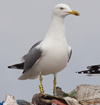 Yellow-legged Gull michahellis adult ST01 February 18-19 2012, Jakuševec landfill, Zagreb, Croatia.
Yellow-legged Gull michahellis adult ST01 February 18-19 2012, Jakuševec landfill, Zagreb, Croatia.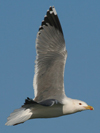 Yellow-legged Gull michahellis adult, February 15 2007, Portalan, Switzerland. Picture: Stephane Aubry.
Yellow-legged Gull michahellis adult, February 15 2007, Portalan, Switzerland. Picture: Stephane Aubry. Yellow-legged Gull michahellis adult, February 15 2007, Portalan, Switzerland. Picture: Stephane Aubry.
Yellow-legged Gull michahellis adult, February 15 2007, Portalan, Switzerland. Picture: Stephane Aubry.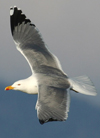 Yellow-legged Gull michahellis adult, February 15 2007, Portalan, Switzerland. Picture: Stephane Aubry.
Yellow-legged Gull michahellis adult, February 15 2007, Portalan, Switzerland. Picture: Stephane Aubry.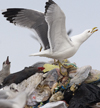 Yellow-legged Gull michahellis adult, February 18-19 2012, Jakuševec landfill, Zagreb, Croatia.
Yellow-legged Gull michahellis adult, February 18-19 2012, Jakuševec landfill, Zagreb, Croatia. Yellow-legged Gull michahellis adult, February 18-19 2012, Jakuševec landfill, Zagreb, Croatia.
Yellow-legged Gull michahellis adult, February 18-19 2012, Jakuševec landfill, Zagreb, Croatia. Yellow-legged Gull michahellis adult, February 18-19 2012, Jakuševec landfill, Zagreb, Croatia.
Yellow-legged Gull michahellis adult, February 18-19 2012, Jakuševec landfill, Zagreb, Croatia. Yellow-legged Gull michahellis adult, February 18-19 2012, Jakuševec landfill, Zagreb, Croatia.
Yellow-legged Gull michahellis adult, February 18-19 2012, Jakuševec landfill, Zagreb, Croatia. Yellow-legged Gull michahellis adult, February 18-19 2012, Jakuševec landfill, Zagreb, Croatia.
Yellow-legged Gull michahellis adult, February 18-19 2012, Jakuševec landfill, Zagreb, Croatia. Yellow-legged Gull michahellis adult, February 09 2013, Gibraltar, UK. Picture: Michael Elleray.
Yellow-legged Gull michahellis adult, February 09 2013, Gibraltar, UK. Picture: Michael Elleray.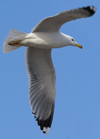 Yellow-legged Gull michahellis adult, February 18-19 2012, Jakuševec landfill, Zagreb, Croatia.
Yellow-legged Gull michahellis adult, February 18-19 2012, Jakuševec landfill, Zagreb, Croatia.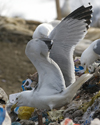 Yellow-legged Gull michahellis adult, February 18-19 2012, Jakuševec landfill, Zagreb, Croatia.
Yellow-legged Gull michahellis adult, February 18-19 2012, Jakuševec landfill, Zagreb, Croatia. Yellow-legged Gull michahellis adult, February 18-19 2012, Jakuševec landfill, Zagreb, Croatia.
Yellow-legged Gull michahellis adult, February 18-19 2012, Jakuševec landfill, Zagreb, Croatia. Yellow-legged Gull michahellis adult, February 18-19 2012, Jakuševec landfill, Zagreb, Croatia.
Yellow-legged Gull michahellis adult, February 18-19 2012, Jakuševec landfill, Zagreb, Croatia. Yellow-legged Gull michahellis adult, February 15 2014, Algarve, Portugal. Picture: Nelson Fonseca.
Yellow-legged Gull michahellis adult, February 15 2014, Algarve, Portugal. Picture: Nelson Fonseca.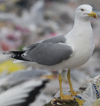 Yellow-legged Gull michahellis adult, February 18-19 2012, Jakuševec landfill, Zagreb, Croatia.
Yellow-legged Gull michahellis adult, February 18-19 2012, Jakuševec landfill, Zagreb, Croatia. Yellow-legged Gull michahellis adult, February 18-19 2012, Jakuševec landfill, Zagreb, Croatia.
Yellow-legged Gull michahellis adult, February 18-19 2012, Jakuševec landfill, Zagreb, Croatia. Yellow-legged Gull michahellis adult, February 18-19 2012, Jakuševec landfill, Zagreb, Croatia.
Yellow-legged Gull michahellis adult, February 18-19 2012, Jakuševec landfill, Zagreb, Croatia. Yellow-legged Gull michahellis adult, February 18-19 2012, Jakuševec landfill, Zagreb, Croatia.
Yellow-legged Gull michahellis adult, February 18-19 2012, Jakuševec landfill, Zagreb, Croatia. Yellow-legged Gull michahellis adult, February 18-19 2012, Jakuševec landfill, Zagreb, Croatia.
Yellow-legged Gull michahellis adult, February 18-19 2012, Jakuševec landfill, Zagreb, Croatia. Yellow-legged Gull michahellis adult, February 18-19 2012, Jakuševec landfill, Zagreb, Croatia.
Yellow-legged Gull michahellis adult, February 18-19 2012, Jakuševec landfill, Zagreb, Croatia. Yellow-legged Gull michahellis adult, February 18-19 2012, Jakuševec landfill, Zagreb, Croatia.
Yellow-legged Gull michahellis adult, February 18-19 2012, Jakuševec landfill, Zagreb, Croatia. Yellow-legged Gull michahellis adult, February 18-19 2012, Jakuševec landfill, Zagreb, Croatia.
Yellow-legged Gull michahellis adult, February 18-19 2012, Jakuševec landfill, Zagreb, Croatia. Yellow-legged Gull michahellis adult, February 18-19 2012, Jakuševec landfill, Zagreb, Croatia.
Yellow-legged Gull michahellis adult, February 18-19 2012, Jakuševec landfill, Zagreb, Croatia. Yellow-legged Gull michahellis adult, February 18-19 2012, Jakuševec landfill, Zagreb, Croatia.
Yellow-legged Gull michahellis adult, February 18-19 2012, Jakuševec landfill, Zagreb, Croatia. Yellow-legged Gull michahellis adult, February 18-19 2012, Jakuševec landfill, Zagreb, Croatia.
Yellow-legged Gull michahellis adult, February 18-19 2012, Jakuševec landfill, Zagreb, Croatia. Yellow-legged Gull michahellis adult, February 18-19 2012, Jakuševec landfill, Zagreb, Croatia.
Yellow-legged Gull michahellis adult, February 18-19 2012, Jakuševec landfill, Zagreb, Croatia. Yellow-legged Gull michahellis adult, February 18-19 2012, Jakuševec landfill, Zagreb, Croatia.
Yellow-legged Gull michahellis adult, February 18-19 2012, Jakuševec landfill, Zagreb, Croatia. Yellow-legged Gull michahellis adult, February 18-19 2012, Jakuševec landfill, Zagreb, Croatia.
Yellow-legged Gull michahellis adult, February 18-19 2012, Jakuševec landfill, Zagreb, Croatia. Yellow-legged
Gull lusitanius adult, February 23 2011, Setúbal, Portugal. Photo: Jose Sousa.
Yellow-legged
Gull lusitanius adult, February 23 2011, Setúbal, Portugal. Photo: Jose Sousa.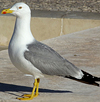 Yellow-legged Gull michahellis adult, February 14 2012, Lagos, Portugal. Picture: Sarfraz Hayat.
Yellow-legged Gull michahellis adult, February 14 2012, Lagos, Portugal. Picture: Sarfraz Hayat. Yellow-legged
Gull michahellis adult, February 22 2007, Tilos island, Dodecanese, Greece. Photo: Constantine Alexander.
Yellow-legged
Gull michahellis adult, February 22 2007, Tilos island, Dodecanese, Greece. Photo: Constantine Alexander.